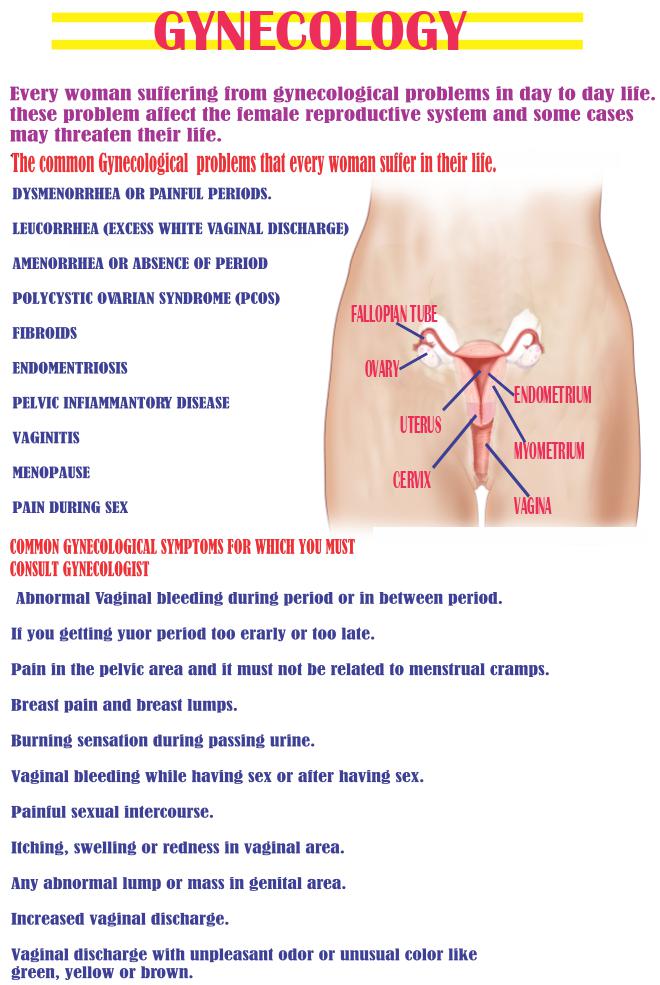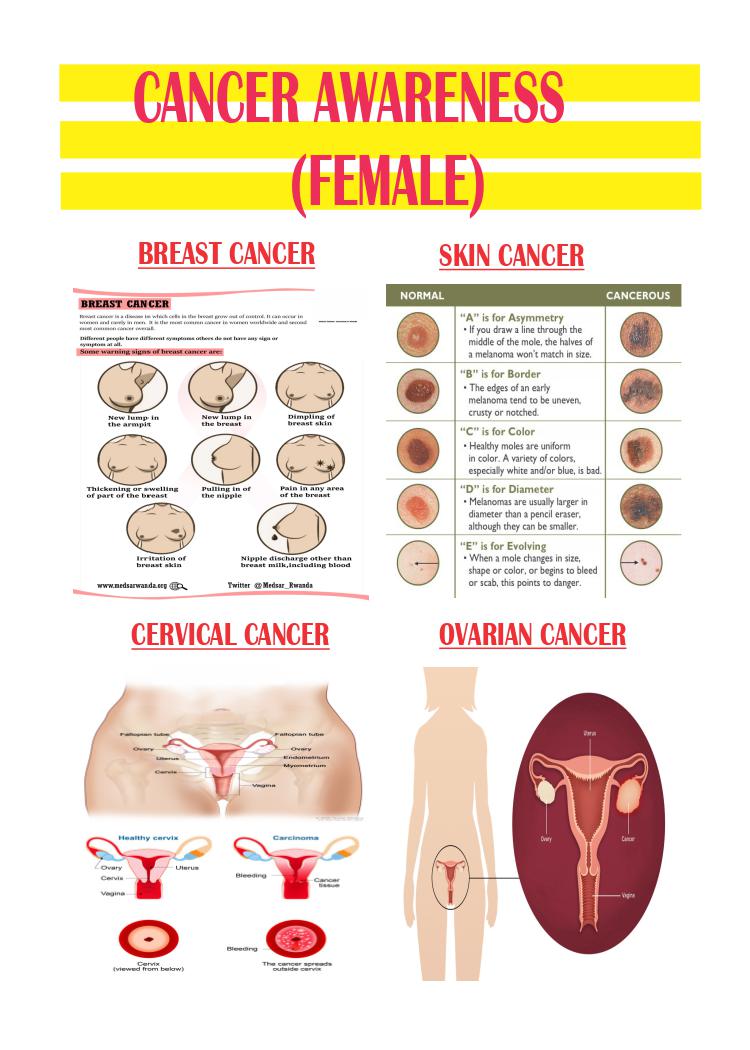


FOR BREAST SELF- EXAMINATION KINDLY PLEASE REFER TO BELOW VIDEO
CANCER IN WOMEN
Some of the cancers that most often affect women are breast, colorectal, endometrial, lung, cervical, skin, and ovarian cancer. Knowing about these cancers and what you can do to help prevent them or find them early. may help save your life. (when they are small, haven’t spread, and might be easier to treat)
What is the CANCER?
You are made up of trillions of cells that over your lifetime normally grow and divide as needed. when cells are abnormal or get old, they usually die. cancer starts when something goes wrong in this process and your cells keep making new cells and the old or abnormal ones don’t die when they should. As the cancer cells grow out of control, they can crowd out normal cells. this makes it hard for your body to work the way it should.
What is the CANCER STAGE?
When a cancer is found, test are done to see how big the cancer is and whether is has spread from where is started.this is called cancer stage. The stage of the cancer is very important in choosing the best treatment for a person.
A lower stage (stage 1 or 2) means that the cancer has not spread very much. higher number (stage 3 or 4) means it has spread more.
There are many types of cancer. cancer can develop anywhere in the body and is named for the part of the body.for instance, breast cancer that start in the breast is still called breast cancer even if is spreads ( metastasizes) to other parts of the body.
They are two main categories of cancer:
HEMATOLAGIC (BLOOD) CANCERS
are cancers of the blood cells, including leukemia, lymphoma, and multiple myeloma.
SOLID TUMOR CANCERS
are cancers of any of the other body organs or tissues. the most common solid tumors are breast, prostate, lungs, and colorectal cancers.
Some types of cancers are the best treated with surgery, other respond better to drugs such as chemotherapy. often 2 or more treatments are used to get the best result.
What is a TUMOR?
A tumor is a lump or growth, some lumps are cancer, but many are not.
Lumps that are not cancer are called BENIGN.
Lumps that are cancer are called MALIGNANT.
What causes cancer?
Cancer cells develop because of multiple changes in their genes. these changes can have many possible cause.lifestyle habits, genes you got frm your parents and being exposed to cancer causing agents in the environment can ply many role. many time there is no obvious cause.
How does cancer spread?
When cancer cells break away from a tumor, they can travel to other areas of the body through either the bloodstream or the lymph system. cancer cells can travel through the bloodstream to reach distant organs. if they travel through the lymph system, the cancer cells may end up in lymph nodes. either way, most of the escaped cancer cell die or are killed before they can start growing somewhere else. but one or two might settle in the new area, begin to grow. and form new tumors.this is spread of cancer to a new part of the body is called METASTASIS.
In order for cancer cells to spread to new parts of the body, they have to go through severel changes. they first have to become able to breake away from the original tumor and then attach to the outside wall of a lymph vessel or blood vessel.then they must move through the vessel wall to flow with the blood or lymph to a new organ or lymph node.
OUR OBJECTIVES
Awareness in among femalespertaing CANCER.
Detection of signs & symptom of common oral, breast & cervical cancer.
Serve the vital treatment of detected cancer.
To curb increasing number of cancer patient in our society
Funding for cancer patient who are living below poverty.
TO PREVENT CANCER
TAKE CARE OF ORAL HYGIENE
TAKE CARE OF GENITAL HYGIENE
TAKE PROPER BALANCED DIET.
EAT FRESH FRUITS AND VEGITABLES RICH IN VITAMIN A & C
ABSTAIN FROM OILY,SPICY FOOD & FOOD.
PREFER VEGITAIAN FOOD
CUT DOWN PICKLES & BAR-BE-QUED FOOD
REGULAR EXERCISE AND CONTRL ON WEIGHT
GO FOR VACCINATION (HBsAg, HPV vaccination)
BREAST CANCER PREVENTION
SELF EXAMINATION OF BREAST EVERY MONTH AFTER PASSING YEAR OF 20 AGE & CLINICAL BREAST EXAMINATION
FEMALES OD AGE 20 TO 40 ONCE IN EVERY 3 YEARS AND AFTER PASSING 40 AGE EVERY YEAR.
MAMMOGRAPHY IS EVERY YEAR FOR FEMALES OF AGE AGE 40 TO 50 AND ABOVE AGE OF 50.
CERVICAL CANCER PREVENTION
HPV - DNA AFTER AGE OF 30.
VACCINATION AFTER AGE 9 - 26.
